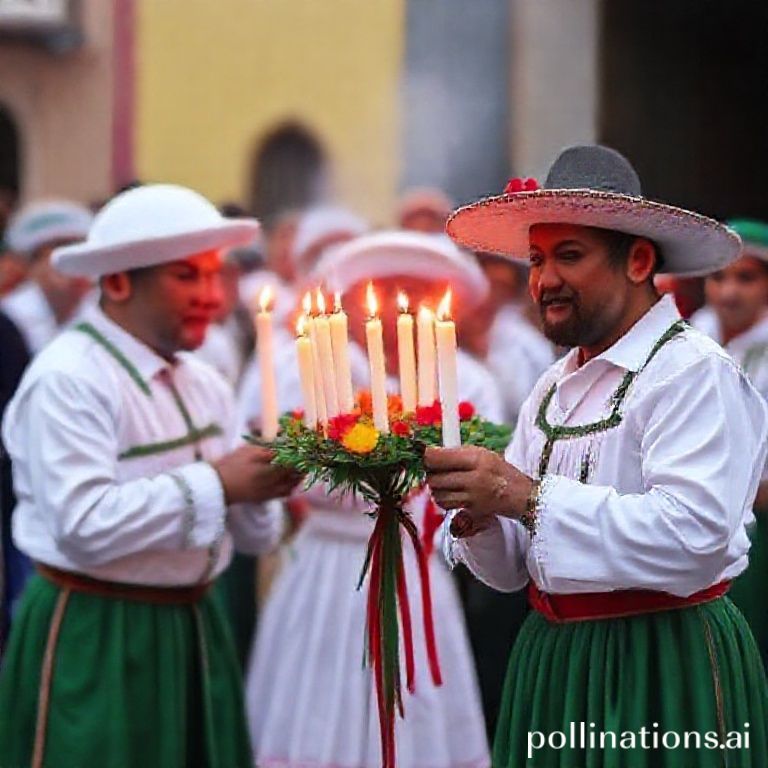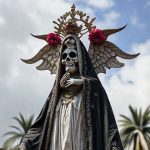Mexico, a land brimming with vibrant culture and time-honored traditions, celebrates The Day of the Candelaria, or Candlemas, every February 2nd. This special day is a beautiful blend of indigenous customs and Catholic beliefs, creating a unique and festive experience for all who participate. It’s a time for families and communities to come together, share delicious food, and honor religious figures with heartfelt devotion.
More than just a religious observance, the Candelaria is a cultural touchstone that reflects the rich tapestry of Mexican heritage. From elaborate costumes to mouthwatering tamales, the day is filled with symbolic acts and joyous celebrations that resonate deeply with the Mexican people. Let’s dive into the fascinating traditions that make The Day of the Candelaria so special.
The Religious Significance
The Day of the Candelaria has deep roots in the Catholic faith, commemorating the presentation of Jesus Christ in the Temple and the purification of the Virgin Mary, forty days after Christmas. Candles, symbolizing the light of Christ, are blessed in churches across the country. Many families bring their own candles to be blessed, hoping to bring divine blessings and protection into their homes throughout the year.
The name “Candelaria” itself is derived from “candle,” highlighting the importance of light in the celebration. This light is seen as a symbol of hope, guidance, and faith, shining brightly amidst the challenges of life.
The Niño Dios Tradition
A central figure in the Candelaria celebrations is the Niño Dios, or Baby Jesus. Families carefully care for their Niño Dios images throughout the year, dressing them in beautiful and elaborate outfits for the Candelaria. This is not a simple act of dressing a doll; it is a deeply reverent practice.
Choosing the Outfit
- Outfits can range from simple white gowns to elaborate costumes representing different saints or professions.
- Many families have a specific “madrina” or “padrino” (godmother or godfather) who is responsible for providing the outfit each year.
- The selection of the outfit is often a thoughtful and prayerful process.
Attending Mass
On February 2nd, families bring their dressed Niño Dios images to church to be blessed. This is a very special moment where they give thanks for the blessings received and ask for continued protection and guidance.
The Tamale Connection
Perhaps one of the most beloved traditions associated with The Day of the Candelaria is the eating of tamales. This tradition is linked to the Rosca de Reyes (Three Kings Bread) eaten on January 6th. Whoever finds the small plastic baby Jesus in their slice of the Rosca is responsible for hosting a tamale feast on February 2nd.
Why Tamales?
Tamales, made from masa (corn dough) and filled with various meats, cheeses, or vegetables, are a staple of Mexican cuisine and a perfect dish to share with family and friends. Preparing tamales is a labor of love, often involving the entire family, making it a truly communal experience.
A Symbol of Gratitude
Hosting a tamale feast is seen as a way of honoring the Niño Dios and sharing blessings with others. It’s a time for laughter, storytelling, and delicious food, strengthening the bonds of family and community.
Regional Variations
While the core traditions remain consistent, the celebration of the Candelaria can vary from region to region in Mexico. Some communities may have unique dances, processions, or local foods that are incorporated into the festivities. Exploring these regional variations can offer a deeper understanding of Mexico’s cultural diversity.
For example, in some areas, you might find elaborate parades with dancers dressed in traditional costumes, while in others, the focus might be more on the religious aspects of the day, with extended church services and prayer vigils.
Conclusion
The Day of the Candelaria is a vibrant and meaningful celebration that reflects the heart and soul of Mexican culture. With its blend of religious devotion, culinary traditions, and communal spirit, it’s a day that brings people together, strengthens family bonds, and honors the rich heritage of Mexico. Whether you’re participating in a church service, sharing tamales with loved ones, or admiring the beautifully dressed Niño Dios images, the Candelaria offers a glimpse into the warmth, faith, and joy that define Mexican life.
If you found this exploration of Candelaria Day traditions insightful, share it with your friends and family! And be sure to check out our other articles about Mexican culture on Life in Mexico!
IMAGE: A heartwarming scene depicting a Mexican family gathered around a table on The Day of the Candelaria. The focus is on the beautifully dressed Niño Dios (Baby Jesus) figure placed prominently on the table. The family members are smiling and laughing as they prepare and share tamales. The room is decorated with colorful papel picado banners and candles. Soft, warm lighting creates a festive and joyful mood. The style should be realistic and capture the essence of Mexican family life and traditions.


